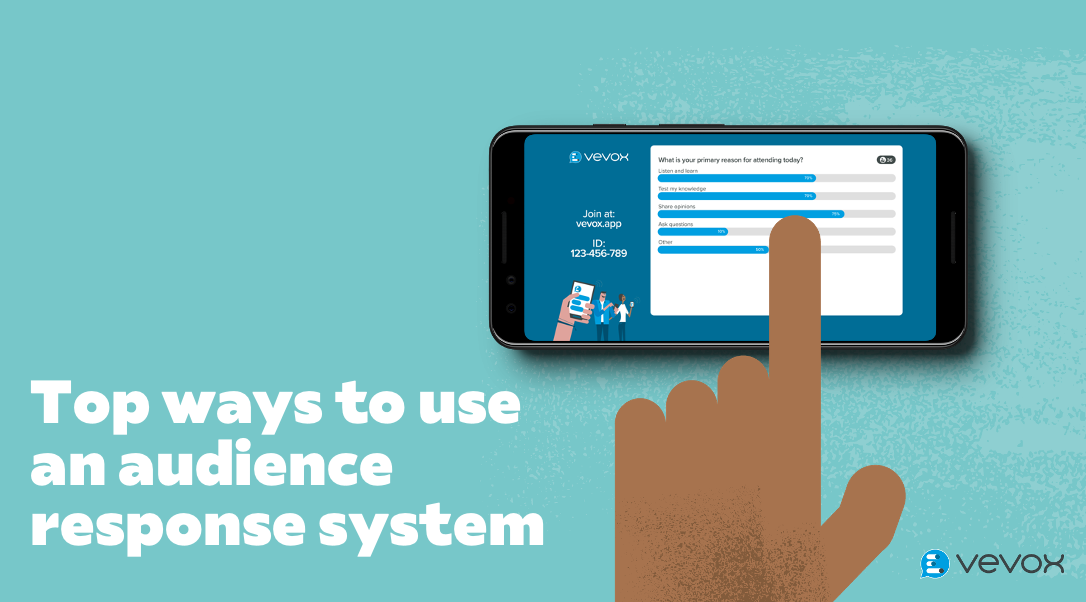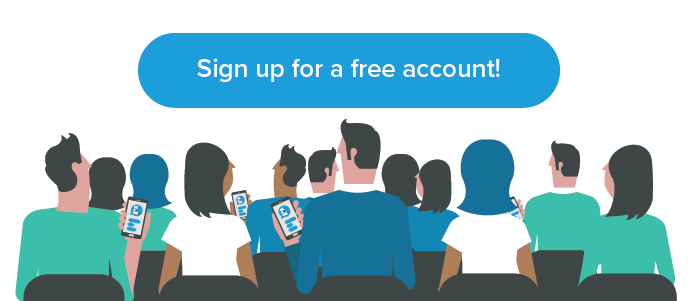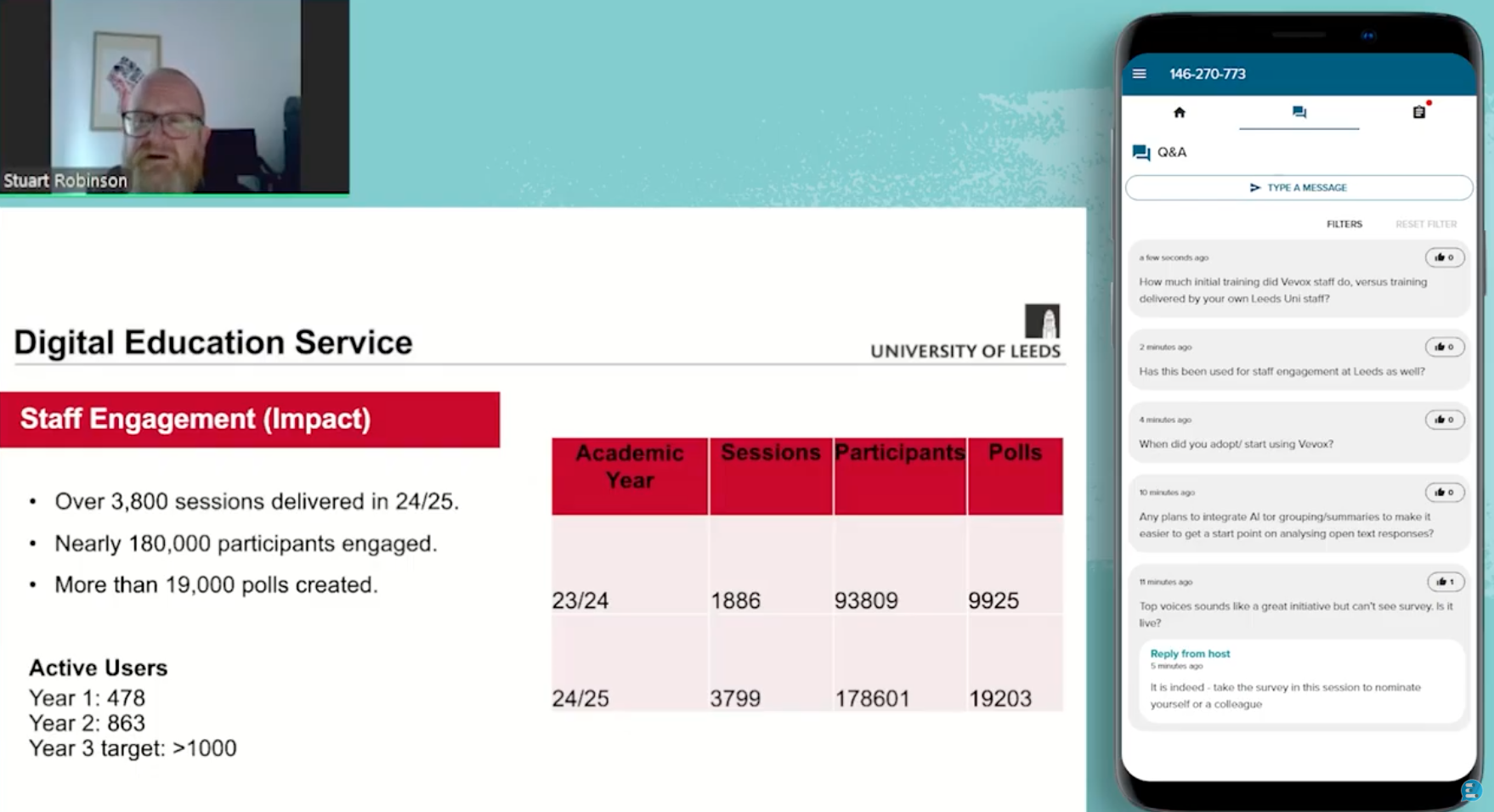Effective communication, storytelling, active engagement and participation is the backbone of most successful presentations. Whether it be a class, meeting, corporate conference, event, tradeshow or a training session, all of these principals are key to creating an effective dialogue between you and your audience.
One tool that has increasingly facilitated interactive communication in presentations is the use of Audience Response Systems (ARS). This is because ARS tools offer features like live polling, real-time Q&A, anonymous feedback, digital quizzes and much more which allows you to have a backchannel that you can use to monitor audience engagement and to offer a platform that creates an equal voice for all. Many of the benefits of ARS tools are explained in this article here: What are the key benefits of audience response systems.
Many organizations use ARS tools in different ways and approaches but the benefits remain the same. In this article, we will take a look at the multiple use cases that highlight the flexibility and impact of this audience technology.
6 effective ways to use an audience response system
1. University Classes & Seminars
In classroom environments in universities around the world, ARS can transform passive learning into an interactive experience. Educators can conduct instant quizzes with real-time results, enabling them to assess student understanding of the material. The immediate feedback helps instructors adapt their teaching on-the-fly to address knowledge gaps. By using these systems, teachers can increase student engagement by turning mobile devices into an engagement tool rather than a distraction. Shy or hesitant students are empowered to share their thoughts and answers anonymously, leveling the playing field and drawing out more authoritative feedback on their comprehension.
2. Employee Training & Development
Corporations are using ARS tools to enhance training sessions and workshops to make them more interactive and inclusive, much like education. Trainers get a sense of how well concepts are being understood and retained, which is especially useful during employee onboarding or when rolling out new policies and procedures. It helps to bring training content to life rather than handing out sheets of paper and large documents that realistically won't be taken in during the training meeting. The ability for employees to also share ideas or questions through anonymous means or without having to speak up gives a sense of freedom to openly voice any thoughts throughout. This is because the fear of being judged is removed in these circumstances.
3. Townhall & All Hands Meetings
ARS tools can drive more democratic and inclusive townhall meetings by allowing every participant, regardless of their position in the company or personality, to have their voices heard without fear of judgment. Large townhall meetings can be intimidating and can often be one-dimensional without the use of a digital back channel. Having a digital ARS in place allows a meeting organizer to get instant feedback from all attendees and to create a level playing field so you can get a true complete picture of what your workforce is thinking.
ARS not only improves engagement in these meetings, but also provides leaders with immediate insights into the collective thoughts of their teams, assisting in making more informed decisions and addressing concerns effectively.
4. Team Meetings
These audience engagement tools can also prove invaluable in smaller departmental team meetings, serving not just as a feedback tool but also as a catalyst for camaraderie and team-building. By integrating ARS, team members can anonymously vote on various topics, contribute ideas, and express their views on departmental issues, leading to a more collaborative team atmosphere. Moreover, playful and interactive elements like live quizzes or polls can add a fun dimension to meetings, thereby enhancing team spirit and engagement.
5. Events & Conferences
Events and conferences can often be focussed on delivering valuable content and takeaways for attendees through direct presentations. However, the true value of event presentations can often come from the dialogue between speakers and the audience. By enabling attendees to directly ask speakers questions and express interest in specific topics through real-time polling and Q&A sessions, ARS ensures that the content delivered is highly relevant and tailored to the audience's current interests. This interactivity enhances the learning and engagement levels of participants, as they can steer the discussion towards areas they are most curious about.
6. Online Webinars & Presentations
ARS technology enables presenters to gather real-time feedback, making a virtual space feel less alienating and more interactive. As speakers deliver content, they can deploy polls, surveys, and live Q&A sessions, which act as an additional communication channel. This immediate input allows presenters to adapt their delivery and get a gauge on what their audience is thinking. Furthermore, this level of interaction promotes a conversational tone, as participants see their input reflected in the course of the session, fostering a sense of involvement and community despite physical distances.
Try the #1 rated audience response system today for free!
There are many ways that audience response systems are being utilized today to create engaging, interactive and inclusive sessions. The use of these tools also makes it easier to track how your students or employees are performing on assessments, retaining knowledge and how they're interacting. This is turn helps you to a better understanding of your team or cohort so you can make more informed decisions. If you're looking to test out an ARS and compare what tool best suits your needs, then why not try Vevox for free?
Recommended blogs & content
- What are the key benefits of audience response systems?
- Vevox for audience engagement
- Vevox ARS and feature overview





